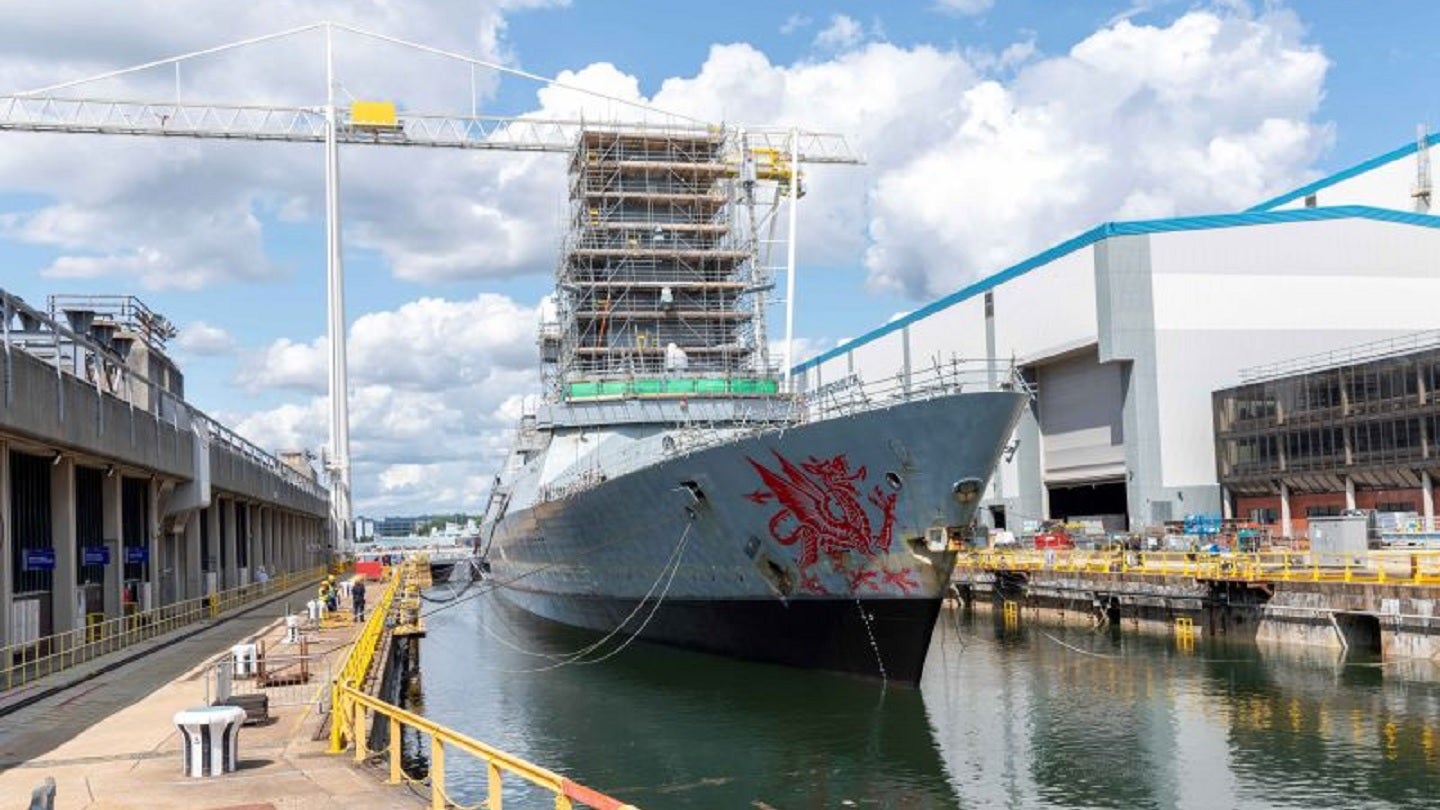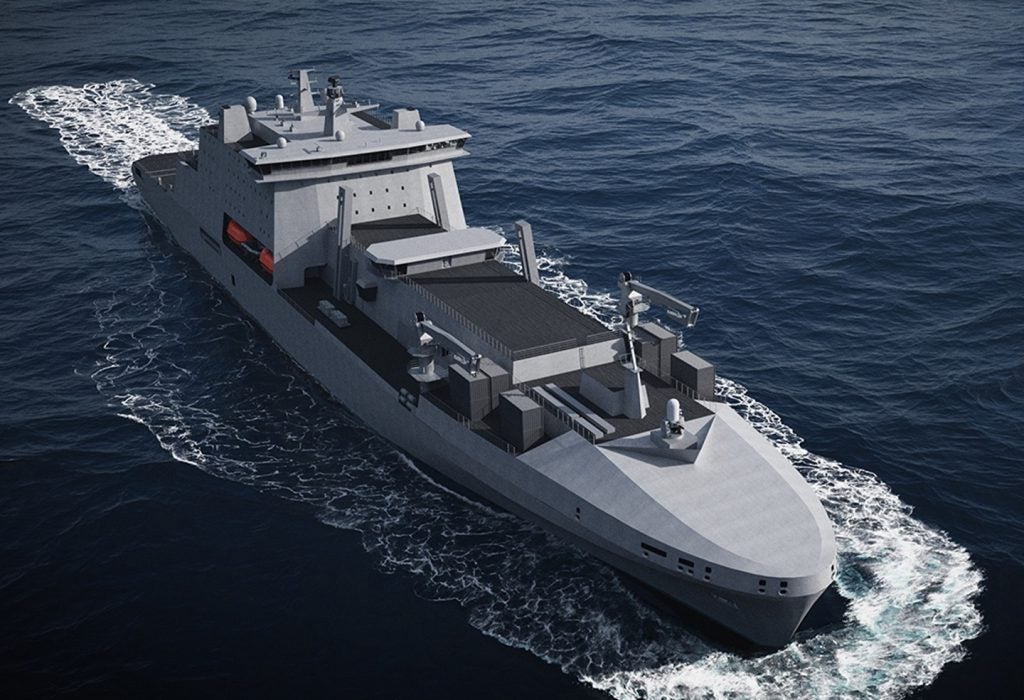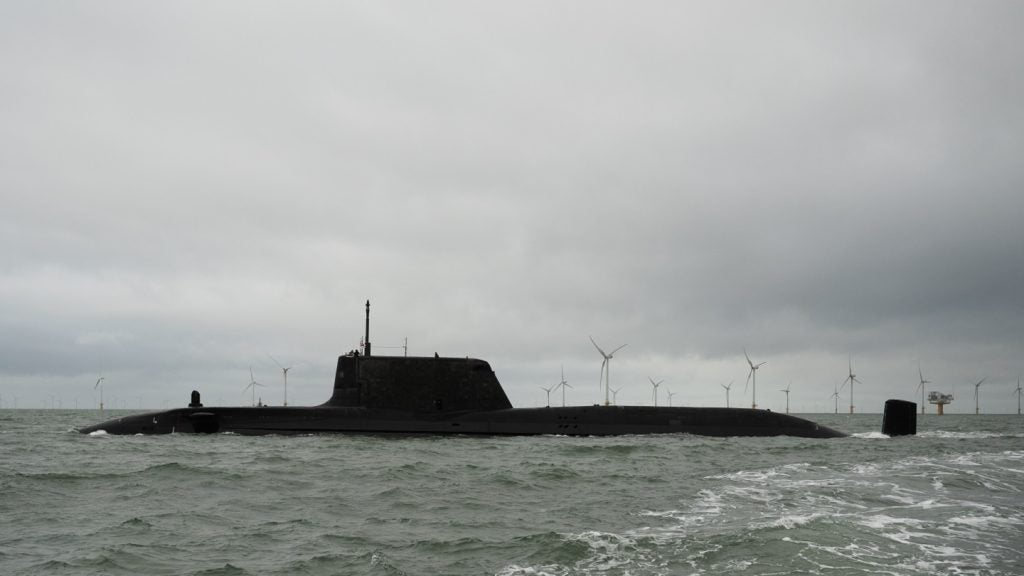
The UK Royal Navy Type 45 air defence destroyer HMS Dragon has moved a step closer to a return to operations after the vessel was flooded up and undocked from Dock 14 at Portsmouth Naval Base last month, as it moves through a planned upgrade programme.
In a social media post in early August, UK defence prime BAE Systems stated that the upkeep of HMS Dragon had reached a “significant milestone” with the flooding up of dock 14 and floating of the vessel, which was performed ahead of schedule.
All six of the UK’s Type 45 air defence destroyers will undergo a programme known as the Power Improvement Project (PIP), which will see the integration of three new diesel engines to rectify a power and propulsion issue suffered by the class.
Utilising a novel hybrid electric drive system, the Type 45s have been beset by technical difficulties, with numerous instances of the vessels suffering electrical problems or even loss of power, particularly when operating in hot and humid temperatures such as those found in the Middle East.
The solution will see the class switch to a more conventional marine propulsion format, using the diesel engines for sustained cruising and utilising its gas turbines for sprint ability. In addition, the Type 45s will also receive an additional 24-cell Sea Ceptor missile silo to boost anti-air capability, augmenting the existing 48-cell Sea Viper system, based on the Aster 15 and Aster 30 anti-air missiles.
Type 45 PIP programme status
| Type 45 destroyer | Upgrade status |
| HMS Daring | Ongoing |
| HMS Dauntless | Completed |
| HMS Diamond | Yet to undergo |
| HMS Dragon | Ongoing |
| HMS Defender | About to begin |
| HMS Duncan | Yet to undergo |
The Type 45 PIP programme is expected to be completed by 2028, with HMS Dauntless the first to undergo the process, emerging in 2022, followed by HMS Daring, which returned to operations in January 2023. HMS Defender and HMS Dragon are at different ends of their respective PIP programmes, while HMS Diamond and HMS Duncan are yet to undergo the process, which will likely be carried out at Cammell Laird shipyard in Merseyside.
In July it was reported by Naval Technology that HMS Defender’s PIP rectification and SeaCeptor installation was projected to cost £68m ($86.32m), according to official figures, which used as a benchmark for each of the six ships in class will see the total programme cost reaching in excess of £400m.
Portsmouth Naval Base’s dock 14 was itself the subject of a multi-million-pound refurbishment process in 2020 to prepare the site for the Type 45 PIPKEEP programme, which saw the installation of a 68m gantry crane, a new caisson to hold back the sea water and the creation of a sonar pit to accommodate vessels with hull-mounted domes.








